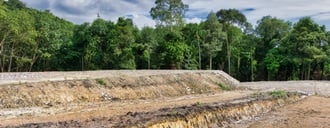Differentiating ESG From Impact Considerations
| ESG considerations typically: | Impact considerations typically: |
|
|
Focus on ESG and Impact Growing Among Investors and Issuers in Latin America
Asset owners and asset managers in Latin America are not only turning their focus to ESG, but are publicly committing to incorporate ESG considerations into their investment decisions. Among new signatories to the Principles for Responsible Investment between 2021 and 2022, growth from Latin America was more than 30% year-over-year, representing one of the highest regional increases globally.2
Looking at impact investing, more than 3,000 organizations globally with US$1.2 trillion in impact investments are allocating capital towards the funding gap required to achieve impact objectives.3 Impact investing is also on the rise in Latin America, having grown more than tenfold in a decade to US$25 billion and with demand for impact investing solutions coming mainly from Mexico, Brazil and Chile.4
Among issuers in Latin America, there is more sophistication in how they are demonstrating their commitments to having a positive impact. They are leveraging labelled bonds to fund projects with impactful use of proceeds and key performance indicators. Sustainalytics recently worked on a notable issuance from BRK Ambiental, the largest privately owned water and waste management organization in Brazil. The company issued the first blue bond in Brazil, focusing on water supply and sanitation. This award-winning initiative was recognized as, “an innovative use-of-proceeds blue bond paving the way for corporate issuance in emerging markets in a critical sector with significant environmental and social benefits.”
Returns Versus Outcomes: What’s Valued by Impact Investors?
The merits of impact investing are an important topic of debate among market participants. According to GIIN’s impact investor survey, the top three reasons why investors make impact investments are:
- It is central to their mission to intentionally pursue impact through their investments;
- Impact investments are part of an investor’s commitment as a responsible investor; and
- Impact investments are an efficient way to meet their impact goals.5
Globally, two thirds of impact investors target market-rate returns from their impact investments, while one third are willing to take a lower return in exchange for greater impact. In Latin America, it’s evenly split, with half of investors targeting market-rate returns and half willing to take a lower return. These results show the significant diversity within the impact investment market in terms of capital expectations and impact profiles.
Among impact investors in Latin America, we see a greater focus on environmental and social impact alongside financial returns. In fact, the BRK bond issuance came to market with a 20-year term and was oversubscribed by 1.6 times. The use of proceeds will be directed towards business solutions for oceanic health, freshwater, and to improve access to water and sanitation.
Challenges and Opportunities for Considering Impact
Within the impact investing space today, one of the biggest challenges is the lack of consistency in identifying and measuring the impact of investments. This leads to comparability issues. Without consistent, reliable, and comparable data on an issuer’s impact on the environment and society, through voluntary standards or mandatory regulations, the problem of greenwashing often surfaces. In fact, investors in Latin America see measuring outcomes, standardization, and the associated resources and costs as the top challenges in impact measurement.6 However, as GIIN replaces the International Finance Corporation as the new host of the Operating Principles for Impact Management, a framework for managing impact capital, we are starting to see a meaningful shift towards market standardization.
In the absence of clear market expectations and a standardized reporting framework, the opportunity lies with companies and investors to continue to shape the foundation of the impact investment market. Investors in Latin America have focused their efforts beyond immediate financial returns to consider long-term impacts on society, the planet, and people. Corporate issuers in the region have also leveraged debt instruments to help support a broad range of socio-economic and environmental developments. These efforts will continue the momentum towards more consistent and standardized reporting on impact across jurisdictions and regions.
For more information on how the impact investing industry is evolving and affecting projects and products across the financial market, please reach out to our Sustainalytics Corporate Solutions team at corporates.americas@morningstar.com.
References
1 Global Impact Investing Network. Impact Investing. https://thegiin.org/impact-investing/.
2 PRI. 2022. Principles for Responsible Investment Annual Report 2022. https://www.unpri.org/annual-report-2022/signatories.
3 Hand, D., Ringel, B., and Danel, A. 2022. Sizing the Impact Investing Market: 2022. The Global Impact Investing Network (GIIN). https://thegiin.org/assets/2022-Market%20Sizing%20Report-Final.pdf.
4 Schwartz, J. and Arévalo-Carpenter, M. 2021. “Impact investing in Latin America and addressing the 'missing middle'” World Economic Forum. https://www.weforum.org/agenda/2021/03/impact-investing-for-latin-america-s-great-reset-addressing-the-missing-middle.
5 Hand, D., Dithrich, H., Sunderji, S., and Nova, N. 2020. Annual Impact Investor Survey 2020. The Global Impact Investing Network (GIIN). https://thegiin.org/assets/GIIN%20Annual%20Impact%20Investor%20Survey%202020.pdf.
6 Hume, V., Davidson, A., and Guttentag, M. 2020. Impact Investing in Latin America – Trends: 2018-2019. Aspen Network of Development Entrepreneurs. https://andeglobal.org/?action=tracking&file=2021/02/LatAm-Impact-Investing-2018-2019-EN.pdf.
Recent Content
Risk and Opportunity in Biodiversity: How Sustainable Finance Can Help
This article outlines how biodiversity loss poses material risks to business and how it connects to many other issues that companies can’t ignore. In addition, it covers how biodiversity conservation presents substantial economic opportunities, and how businesses can address and access these opportunities by issuing linked instruments that integrate biodiversity considerations.
Today’s Sustainable Bond Market: Boosting Confidence in Sustainable Bond Issuances
In this article, we examine the kinds of sustainable bonds offered in the market, some of the key regulations being developed in different markets and the current initiatives to improve the quality and credibility of issuances.
Webinar Recap: How Integrating ESG Can Drive Opportunity for Private Companies
Recently, Morningstar Sustainalytics hosted a webinar – ESG in the Lifecycle of a Private Company: How Stakeholder Demands Drive Sustainability in Private Markets – to address some of the questions private companies might have surrounding ESG and how it could impact their business.








%2Frbc-canadian-core-real-estate-fund-green-bond-framework-second-party-opinion-(2021)&_biz_t=1746767093146&_biz_i=%0A%09RBC%20Canadian%20Core%20Real%20Estate%20Fund%20Green%20Bond%20Framework%20Second%20Party%20Opinion%20(2021)%0A&_biz_n=1&rnd=36032&cdn_o=a&_biz_z=1746767093612)

